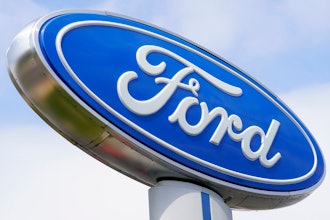
 John Carnevale
John CarnevaleFood safety has always been a primary concern for the food manufacturing industry, but since the passage of the Food Safety Modernization Act (FSMA) in 2011, brands and their suppliers are still struggling to meet the demands of regulation. Often, the need for high-speed processing and efficiency are at odds with sanitation guidelines and inspections.
Understanding how the law applies to equipment design and purchase considerations is vital to the success of any OEM. Food safety governs every step of the harvesting, processing, packaging, storing and shipping process. OEMs must be aware of how the rules and regulations affect their brand customers. Some of the rules put in place by the FSMA have only just been finalized, so implementation and compliance are a concern. Furthermore, 2017 marks the full first year of compliance for many food manufacturers.
The industry has changed drastically since the Food and Drug Administration (FDA) implemented regulations governing how food safety is handled; some of these rules dated back to the FDA’s founding, nearly 80 years ago. The FSMA recognizes that the food industry is bigger, more global, and must be proactive rather than reactive. Data- and science-driven policy are more important than ever.
The FSMA has rules and guidelines in place for nearly every step involved in the harvesting and production of food. For instance, OEMs involved in dealing with fresh fruit and vegetable companies, small farms and foreign suppliers should pay particular attention to new regulations, as handling and processing equipment are drastically affected by the FSMA. Smaller companies may have trouble handling the costs and overhead that the FSMA introduces, and new regulations on interactions with foreign suppliers could be expensive to implement.
While not directly under the authority of the FSMA, OEMs are still a part of compliance. For example, if a food manufacturer has a product recalled, the FDA will cite the brand, which requires the food manufacturer to examine the machine that created the contamination and recall. If a particular OEM’s equipment is found to be at fault, the supplier will find it hard to continue to service its brand customers without significant improvements in its sanitary procedures and manufacturing processes.
Fortunately, most OEMs are ahead of the curve when it comes to safety and sanitation. Most of these companies use Hazard Analysis and Critical Control Points (HACCP) as a part of their design principles. The FSMA now requires preventative controls, which are similar to HACCPs that OEMs use, but are specifically tailored to food safety. As a result, many OEMs do not anticipate major changes or large orders of new equipment because of their progressive approach and best practices. They may need to adapt equipment to meet evolving regulations, but a drastic overhaul is not on the horizon.
Sanitation Processes
Consider the regular cleaning and sanitizing process a food manufacturer goes through. Because equipment cannot operate while being cleaned, it must shut down. Many manufacturers used to clean equipment approximately every 24 hours, but now the FSMA requires science-backed processes and proof that cleaning operations are effective, which could necessitate more regular washdowns.
Also, cleaning occurs for a number of reasons when lines are switched, including meat to non-meat foods, different species of animals, processing common allergens and different spices and seasonings. Specialty manufacturers, non-GMO and organic labels may customize their production lines even further. Cleaning takes an immense amount of time out of the day that could otherwise be used for production. The easier an OEM makes it to clean equipment and get back to production, the greater market advantage they have.
Compliant cleaning is not just wiping down a stainless-steel surface. Workers must disassemble equipment, and every part, gasket and knob must be thoroughly cleaned and sanitized. The easier an OEM’s equipment facilitates this process, the more marketable it is to brands. Any part of an OEM’s equipment that is concave, hollow or otherwise non-linear can trap moisture and is considered a liability. Food manufacturers often use powerful, super-hot jets of water and chemicals to clean equipment. If this water gets trapped anywhere, it can be a mold and contamination hazard. Remember that the FSMA is proactive, so such situations should be prevented from the outset by thoughtful equipment design whenever possible. Equipment that self-cleans with programmable and customizable options is another time and labor-saving option OEMs can implement.
The jets of super-hot, chemical filled water are a concern in a different way as well. Consider that food manufacturers often use chemicals like bleach, powerful detergents, ammonia, phosphates, acids and alkalis to clean equipment. If the FSMA does end up leading to more frequent cleaning, this can be a primary concern for the durability of equipment. OEMs must ensure equipment and surface materials can stand up to this abuse and protect sensitive electronics.
That same sensitive electronic equipment that allows food companies to collect all the required data by the FSMA, and allows equipment to link and work together, faces its own set of concerns. Ideally, control panels should be easy to hose down, but this is likely unrealistic. Instead, the panels should make it easy to shield sensitive electronics from such conditions and then make it easy to spot that they need special cleaning. This could mean bright, visible covers, loud verbal notifications and alarms, and frequent reminders. The FSMA is proactive, and making the control panels, switches, buttons and related parts of equipment easy to clean is a vital part of this.
While wet cleaning may seem more obvious, that is not all there is to it. Before food manufacturers even reach that step, they must remove large debris, soils and the like. The same general guidelines apply here, too. Make it easy to reach and clean all parts of machines. Equipment should disassemble easily, and any parts that could trap dust and debris should be minimized or eliminated entirely.
Beyond hot water cleaning, the FDA has a long list of chemicals approved to sanitize equipment. These chemicals include iodine, calcium hypochlorite, ammonium chloride, ethyl alcohol, isopropyl alcohol and sodium dichloroisocyanurate. Equipment should withstand repeated use of these chemicals. Milk handling operations cannot use certain chemicals, including trichloromelamine and either sodium lauryl sulfate or dodecyl-benzene sulfonic acid, but other operations you serve may use them, which is something else to keep in mind. Remember that organic and non-GMO labels may wish to use other cleaning chemicals, and have to balance this with FSMA regulations. When working with a particular industry, be sure to know these requirements. What you are doing as an OEM should line up with FSMA requirements and your customers’ operations to best suit their needs. Drying time is another concern. Once the equipment is clean, how quickly can it get back up and running? If it takes hours to dry and is out of operation, that is valuable production time wasted.
Focus on Fruit and Vegetable Processing
Fruit and vegetable companies are likely to require the most investment in new equipment and should be an area of focus for OEMs in equipment design. The FSMA applies many new standards to the harvesting, handling and processing of fresh produce. OEMs should keep this in mind when designing equipment for this subset of the food industry.
One important development in fruit and vegetable processing is the introduction of new rules governing water quality standards. These regulations mandate no detectable generic E. coli in water that could end up on produce. This includes water for hand washing during and after harvesting, water used to wash surfaces that touch food and water used to irrigate sprouts. Water directly applied to produce other than sprouts can have a geometric mean of 126 or less colony-forming units (CFU) of generic E. coli per 100 mL of water. Additionally, the statistical threshold is 410 or less CFU of generic E. coli per 100 mL of water.
All of these new regulations mean more testing, which means demand for testing equipment, but also possible production delays. Water purification equipment purchases may also rise if manufacturers find their water supply does not meet requirements with their current setups. Sprouts are especially under tight restrictions, because they have been linked to many historical instances of food poisoning.
Equipment should reduce contaminants through enhanced filters and metal detectors. Because the FSMA changes food safety from reactive to proactive, thorough data collection should capture information from critical control points and from the preventative controls the FDA has outlined, while also keeping track of performance. This would allow companies to have both the adequate records required by law and analysis that highlights inefficiencies in production. If an OEM’s equipment’s data shows where certain parts of production can be improved, while maintaining regulatory compliance, it is likely to be popular in the market.
The FSMA is based on detailed analysis and one of the notable areas in which OEMs can excel is offering scientific proof that their products meet marketing claims. This includes scientific data on bacteria control and sanitation. For example, OEMs can provide data to show how long bacteria can survive on their product surfaces. Providing ways to keep records and track tests is another method in which OEMs can not only offer equipment that allows companies to meet FSMA requirements, but that also provides a competitive advantage.
Because the FSMA is heavily data driven, communication between various pieces of equipment, shop computers and office computers should be easy and seamless. That way, all employees — from operators to the CEO — are aware of the details of operations. An OEM that offers a way to manage all of the two years’ worth of data the FSMA mandates, which often currently lies in spreadsheets, word documents or in physical filing cabinets, would have an immense advantage in the marketplace. Larger companies look for many different diagnostic and record-keeping tools. They want critical control points, food processing, sanitation, packaging, downtime and performance, and FSMA operational documentation to be easily captured, viewed and used across a single interface. Downtime is of particular importance, as it cuts into revenue. Providing short training videos allows OEMs to answer concerns about worker safety and preparedness.
Working With Foreign Food
Foreign and imported food regulations introduced by the FSMA mean that companies involved with using imported food as a part of their production processes face a new set of challenges. This is especially true for small specialty manufacturers. The FDA outlines that it will work with foreign governments whenever it deems their standards meet or exceed FSMA requirements. Still, the overhead costs of sending inspectors to different countries to make sure processes and equipment are compliant is significant, and while larger enterprises can often afford this expense, smaller ones may not be able to. As such, OEMs that are international can offer a competitive advantage if the equipment they sell is meets certified global standards that match FSMA requirements.
What Everyone Has in Mind
Both OEMs and food manufacturers need to remember that the FSMA is proactive, not reactive. The processes, practices and equipment that ensures food contamination does not happen, and that the food supply is safe from farm to table, requires coordination and communication at every step of the process. OEMs can provide a key resource through sanitation-focused products, interconnected data-driven processes and consultations.
The food industry is subject to inspections at least every three years instead of ten, along with inspections based on reasonable suspicion and random testing. In addition, the FDA can call for food recalls under the FSMA, something brands consider when purchasing or upgrading equipment. Forecasting the convergence of productivity and compliance will enable equipment manufacturers to deliver highly marketable products that future-proof brands against regulations and improve their bottom lines.























